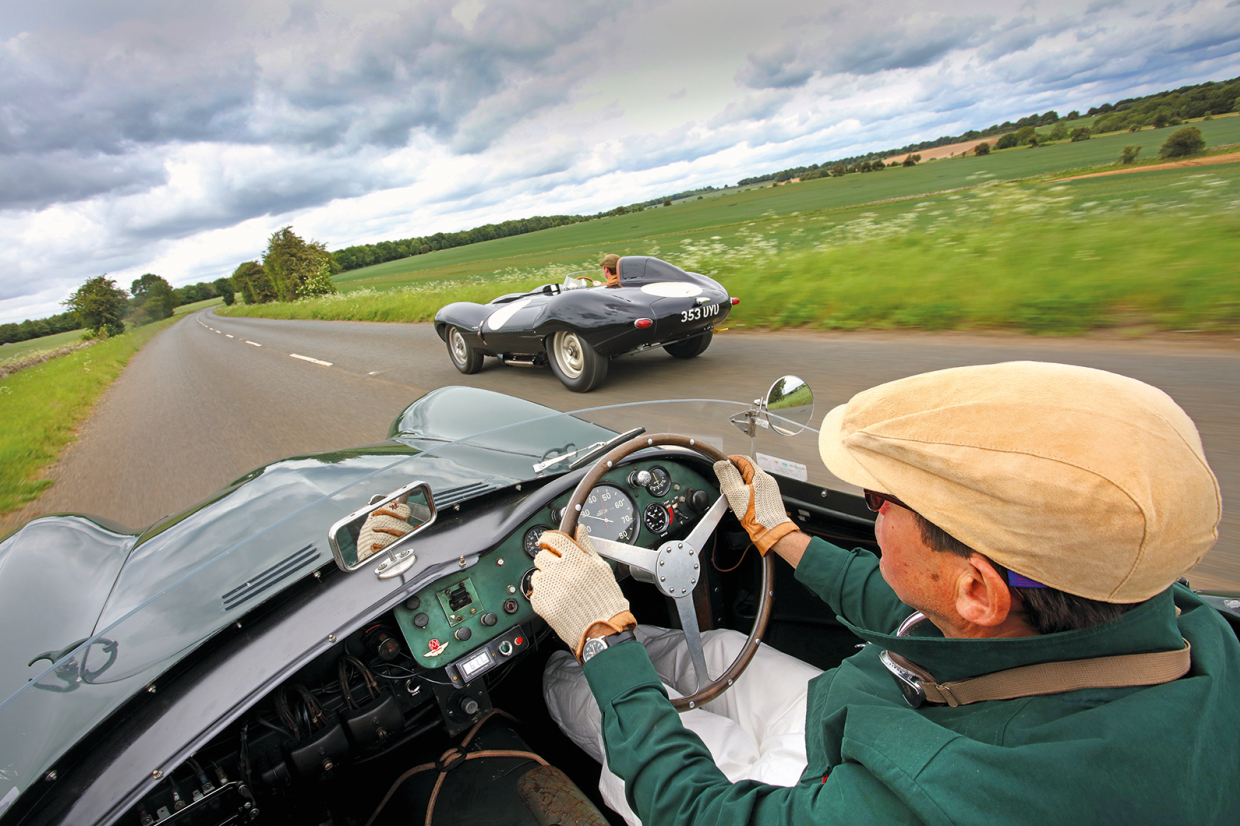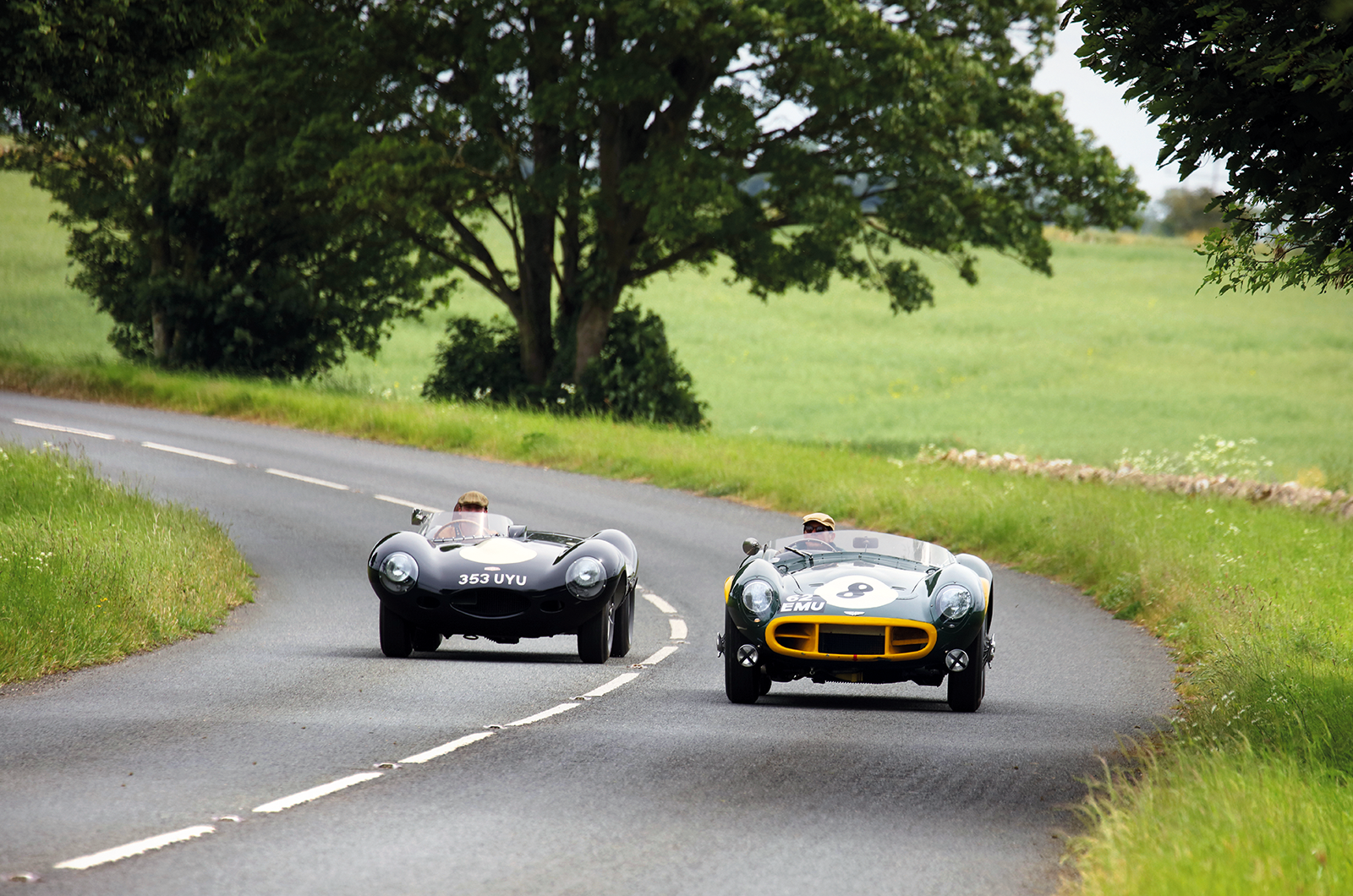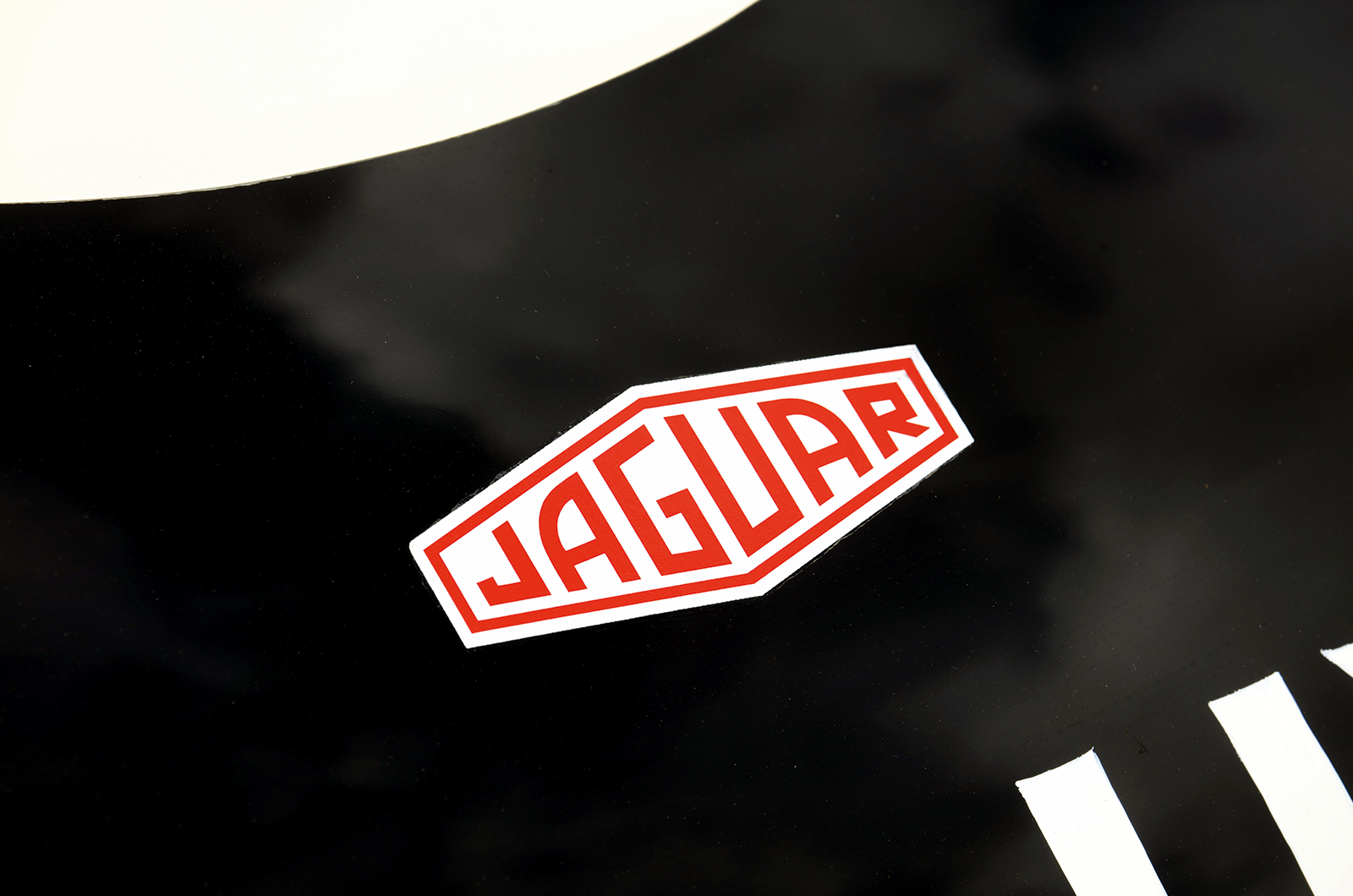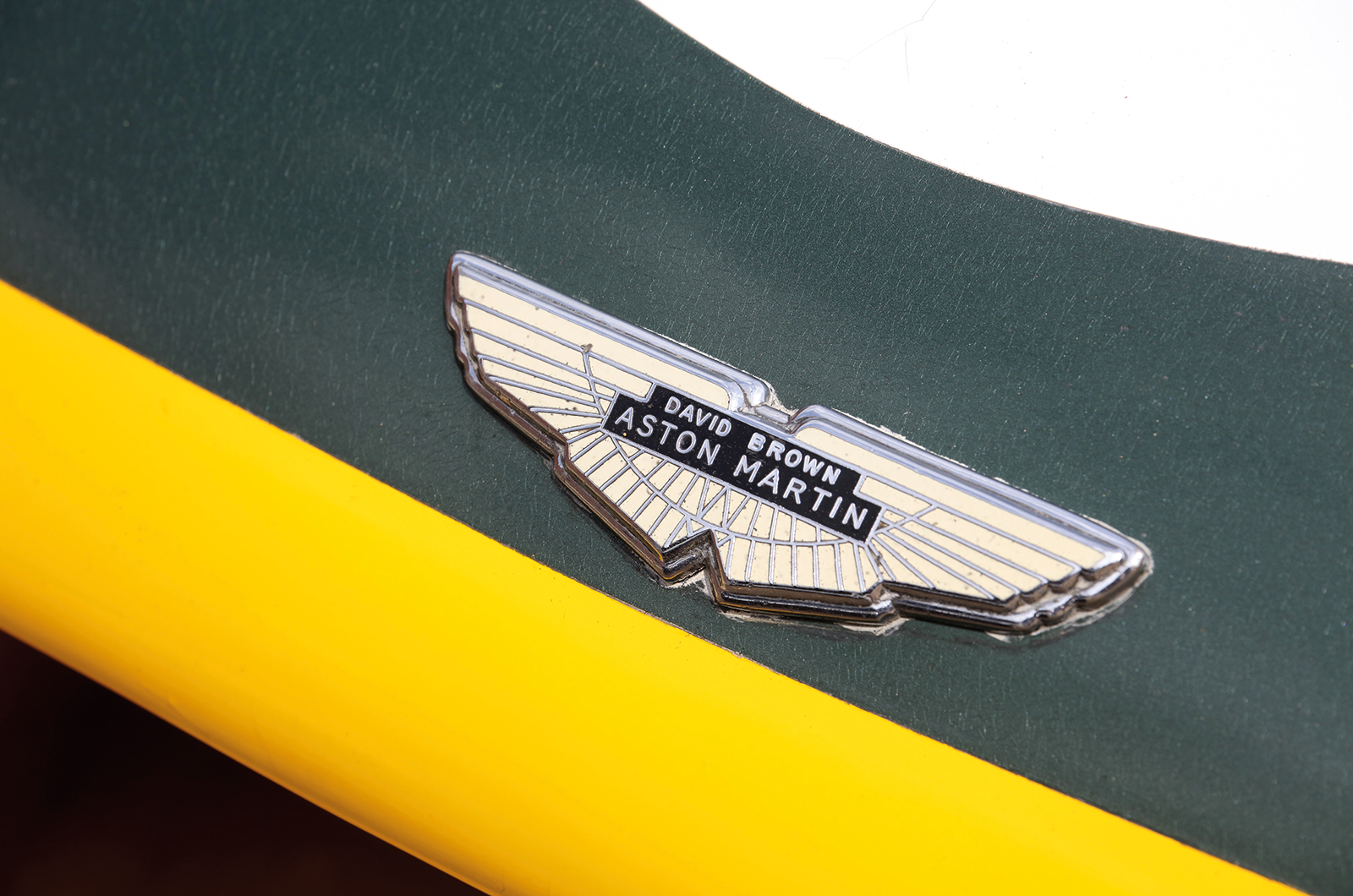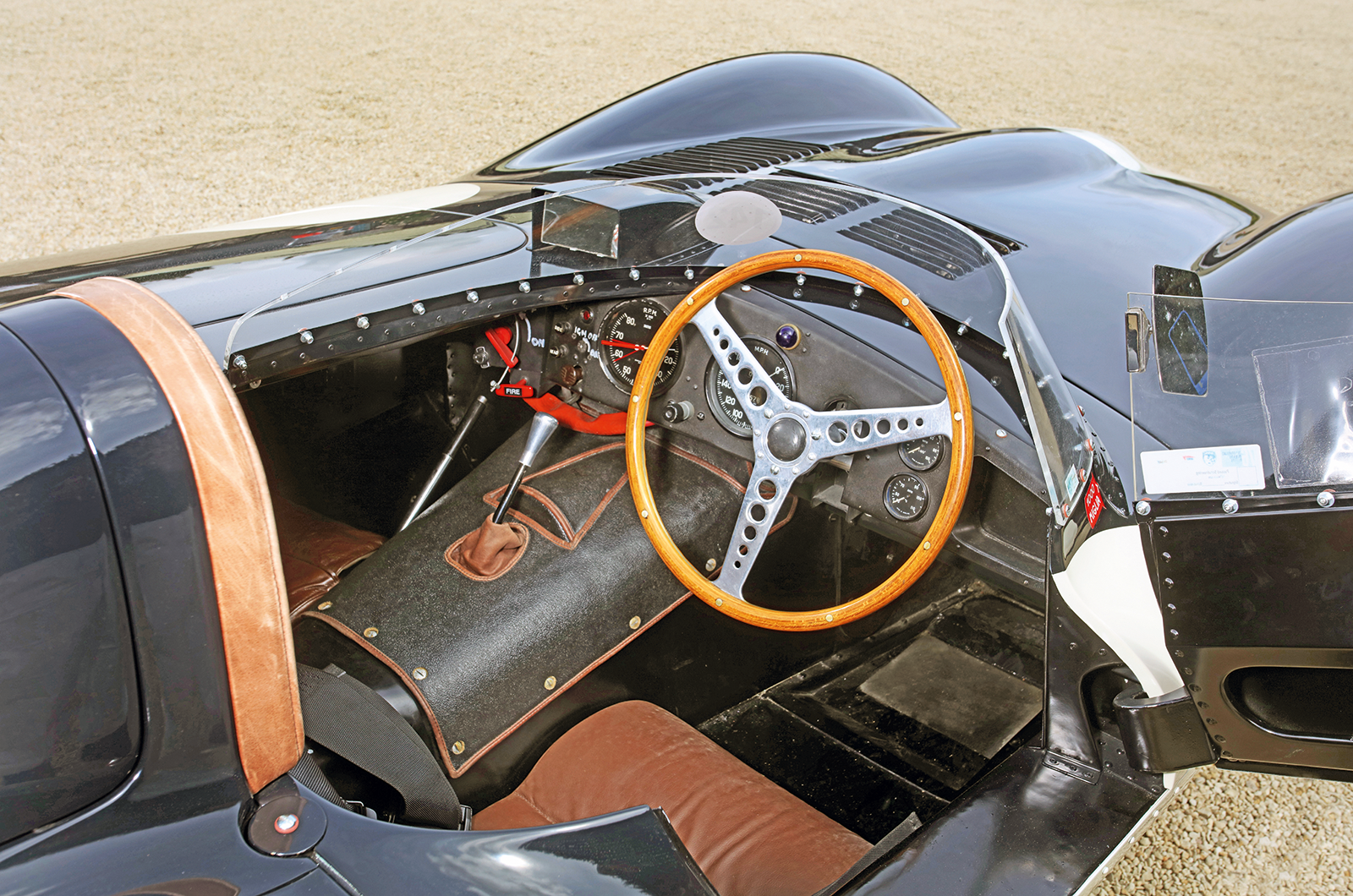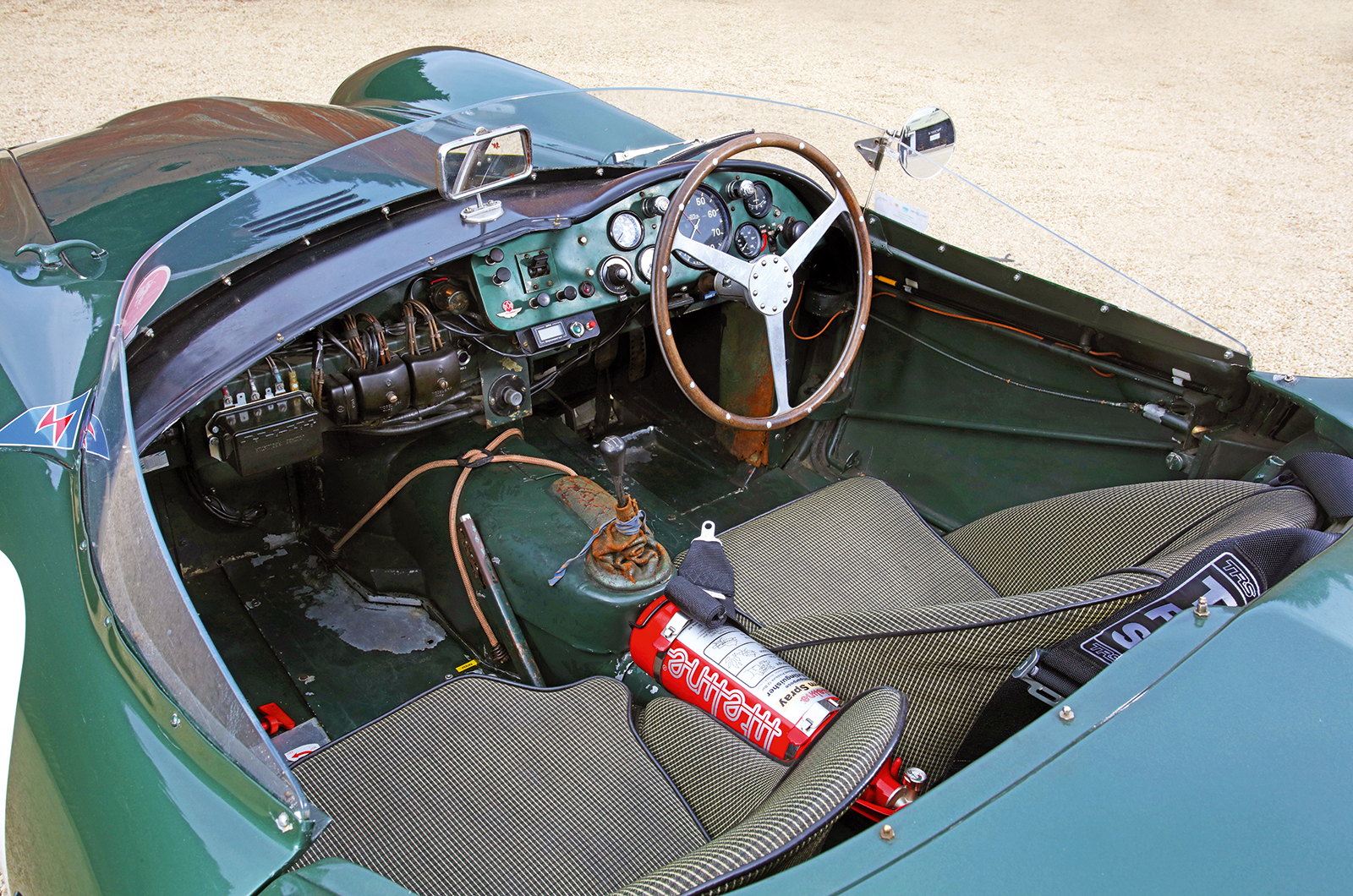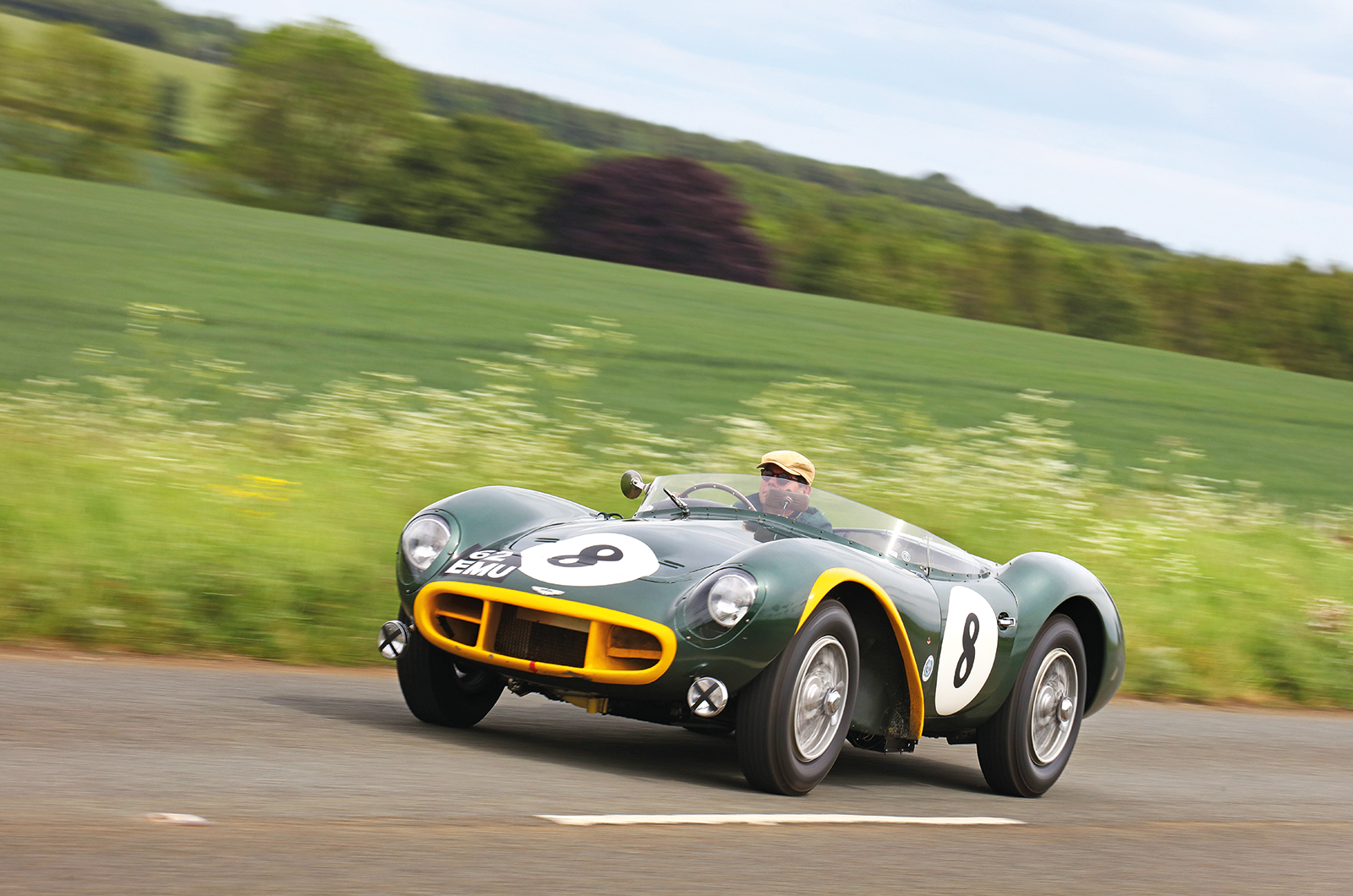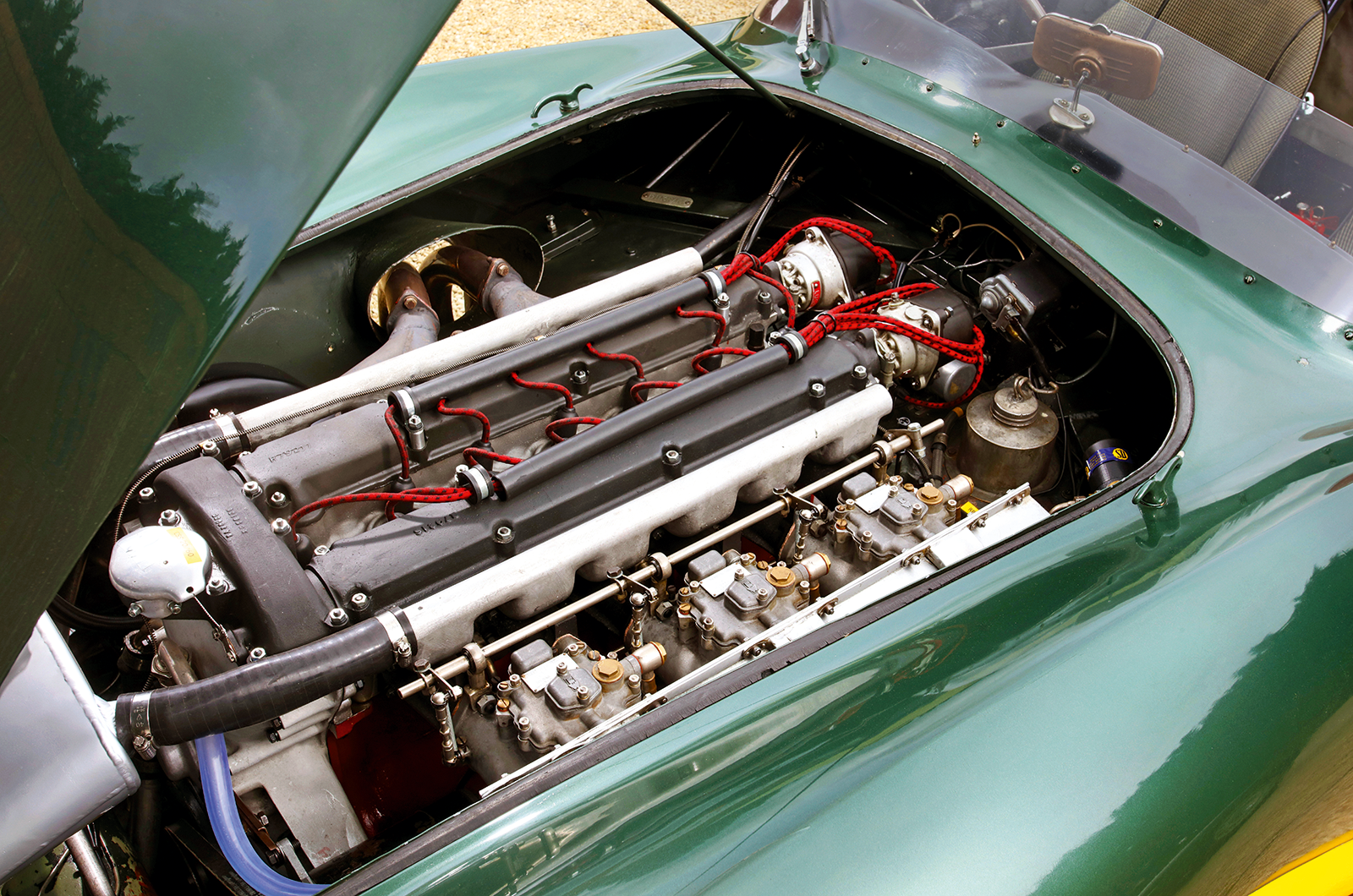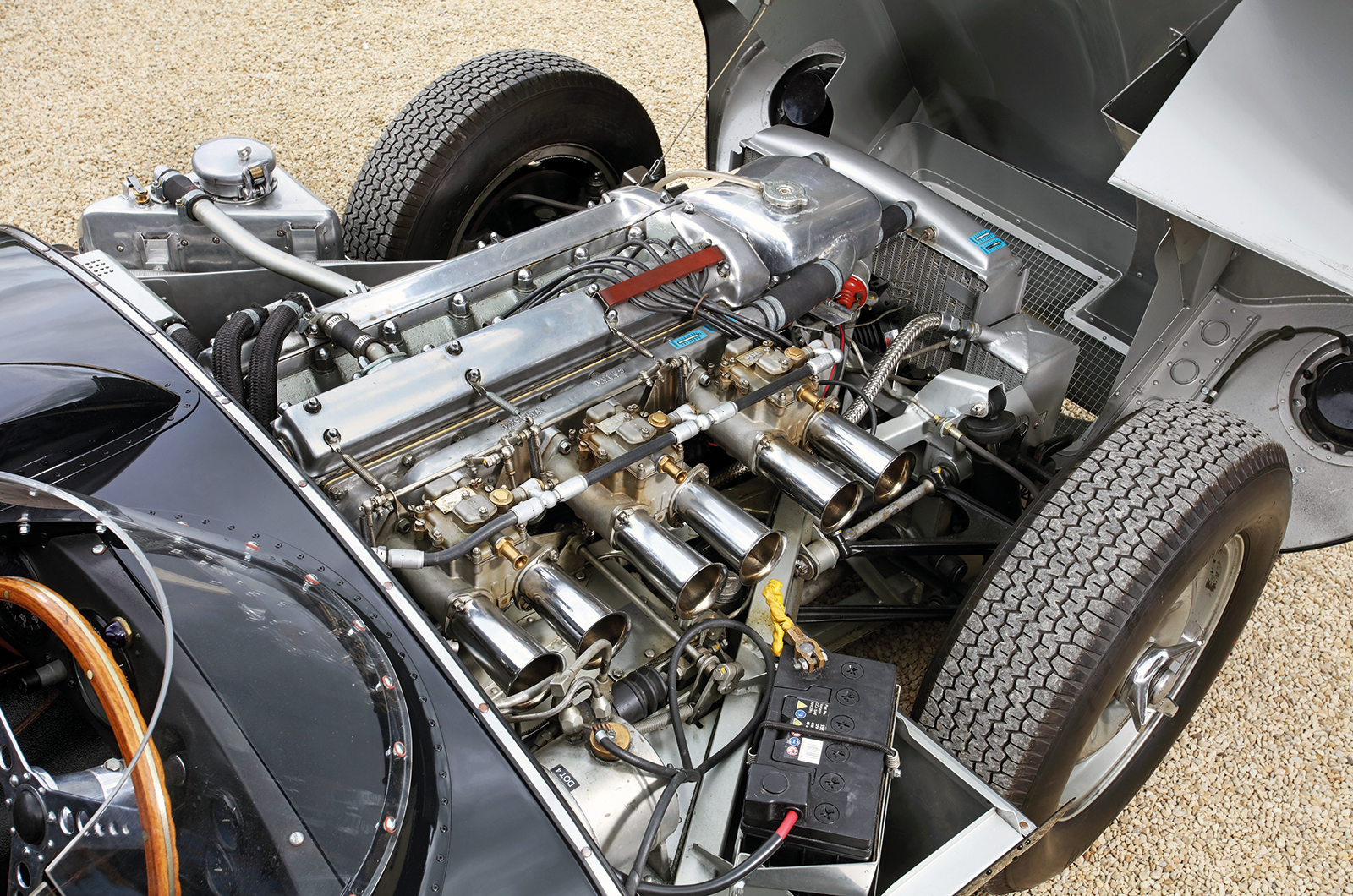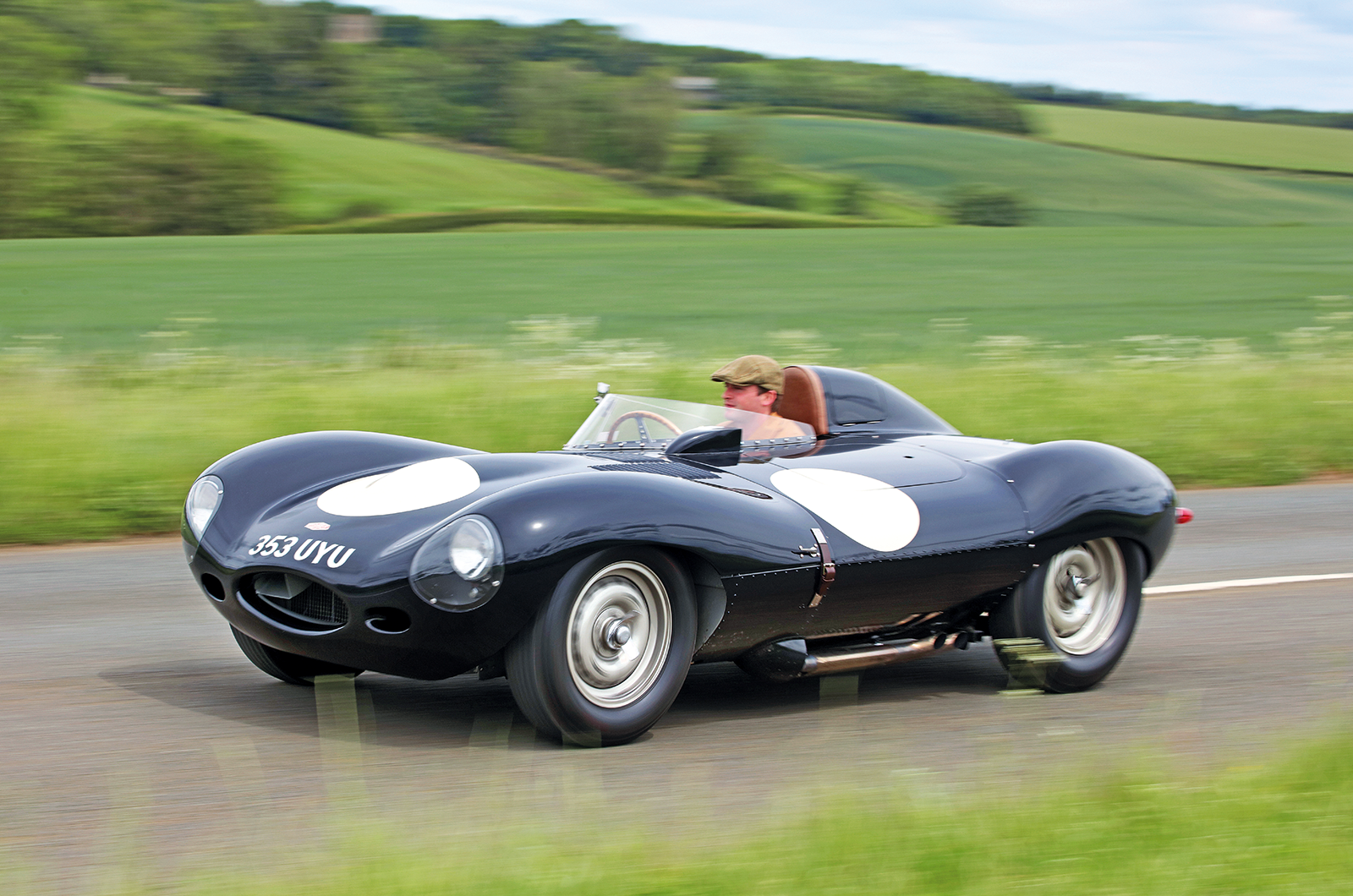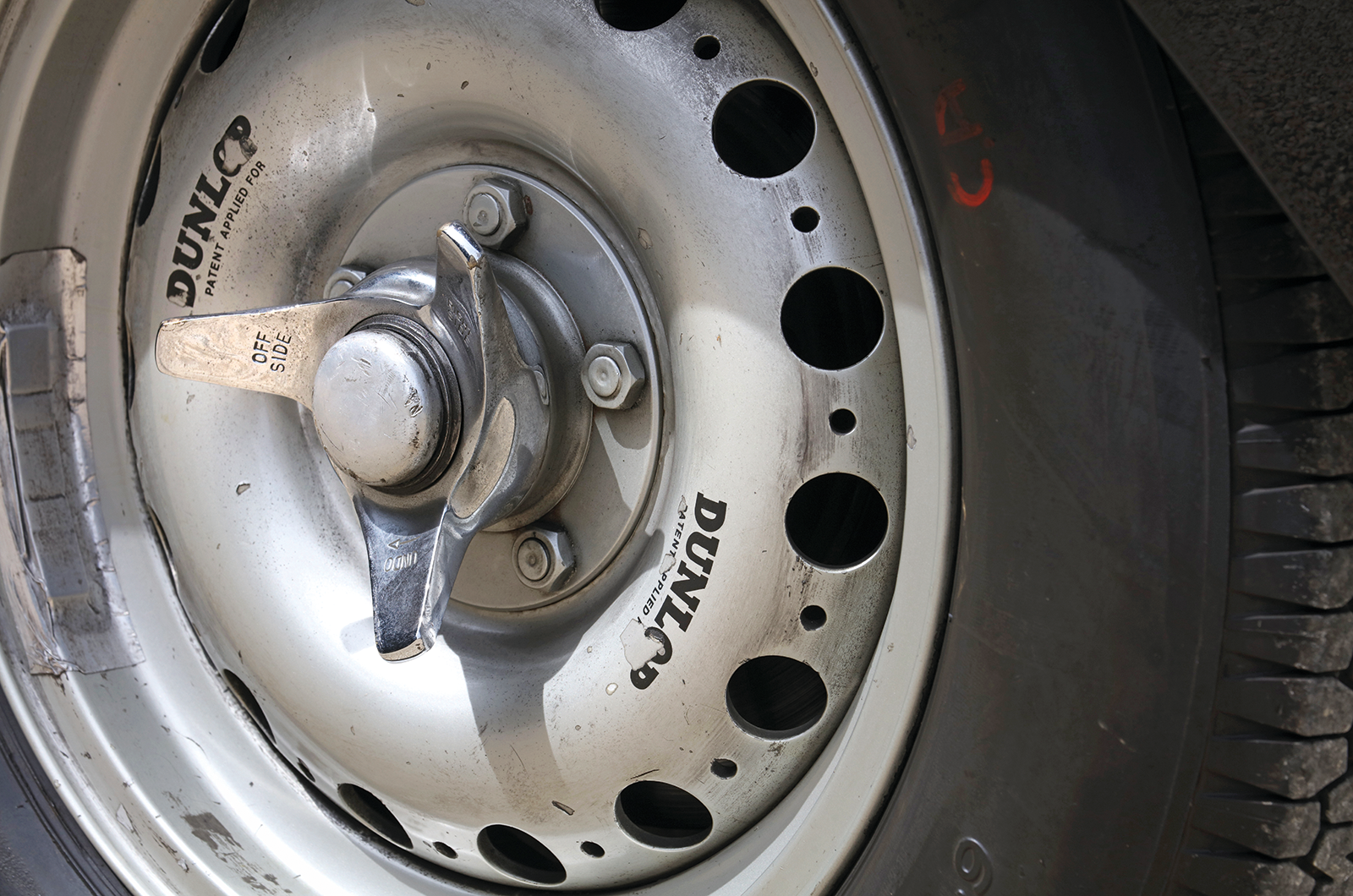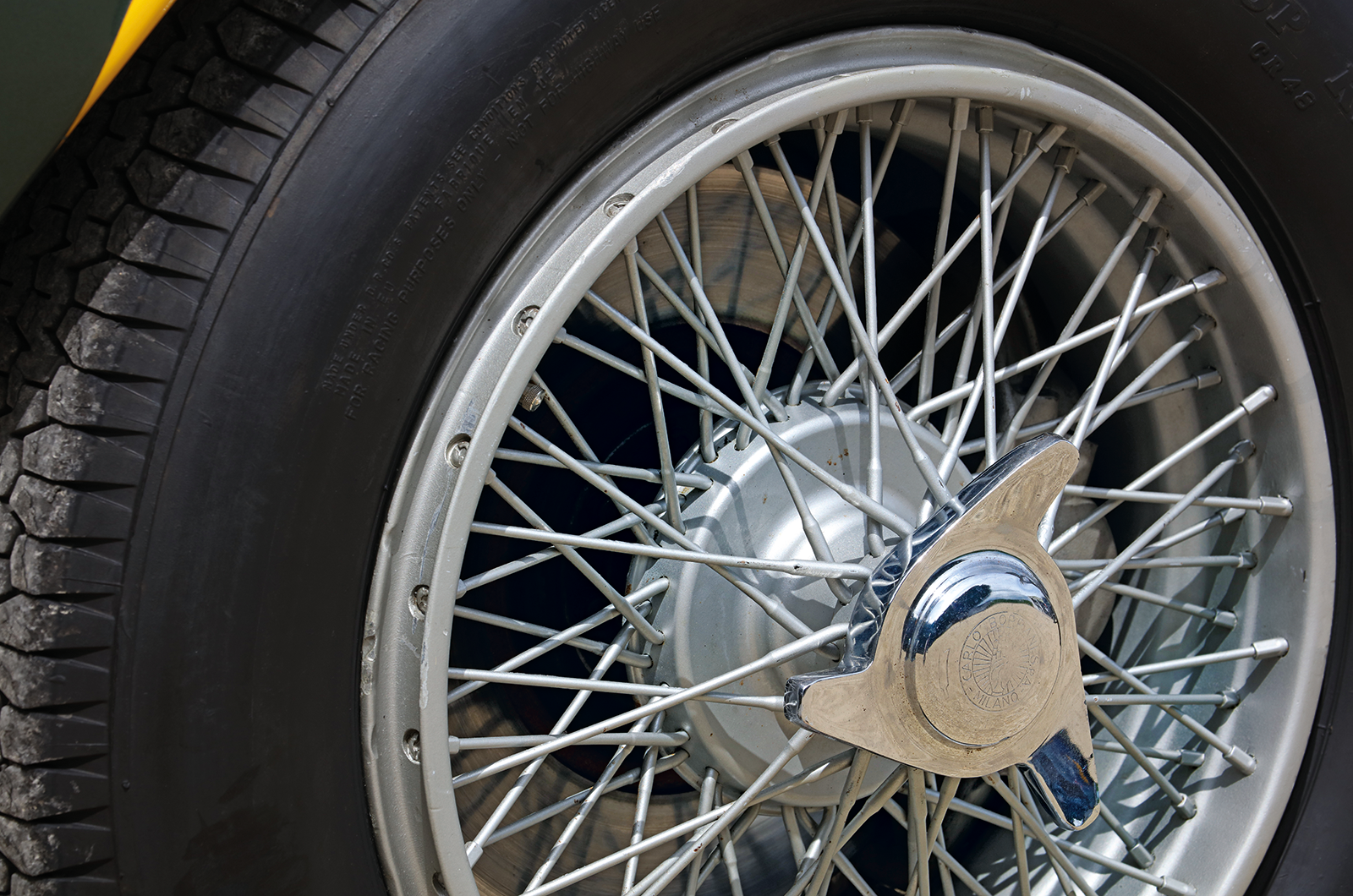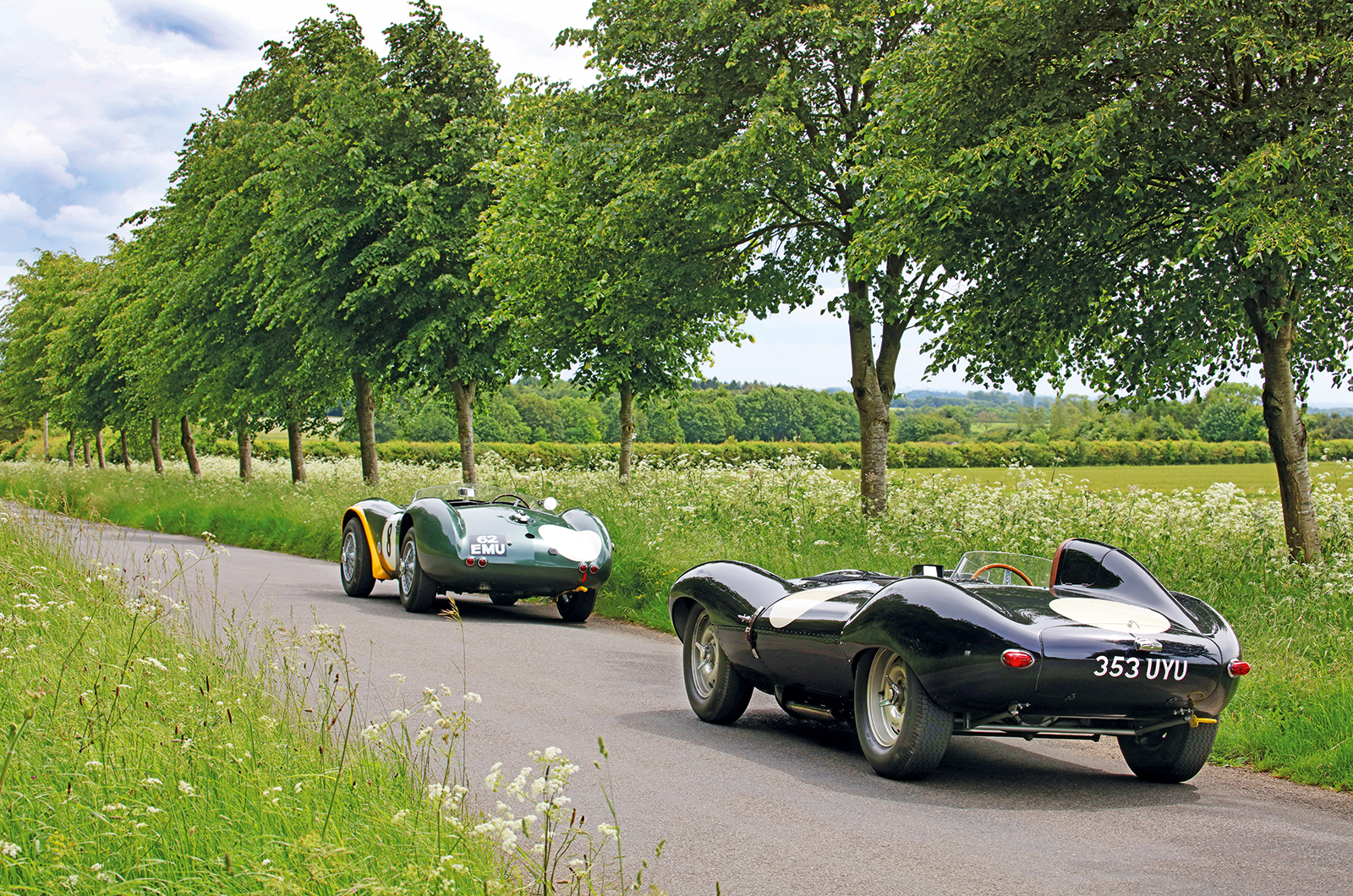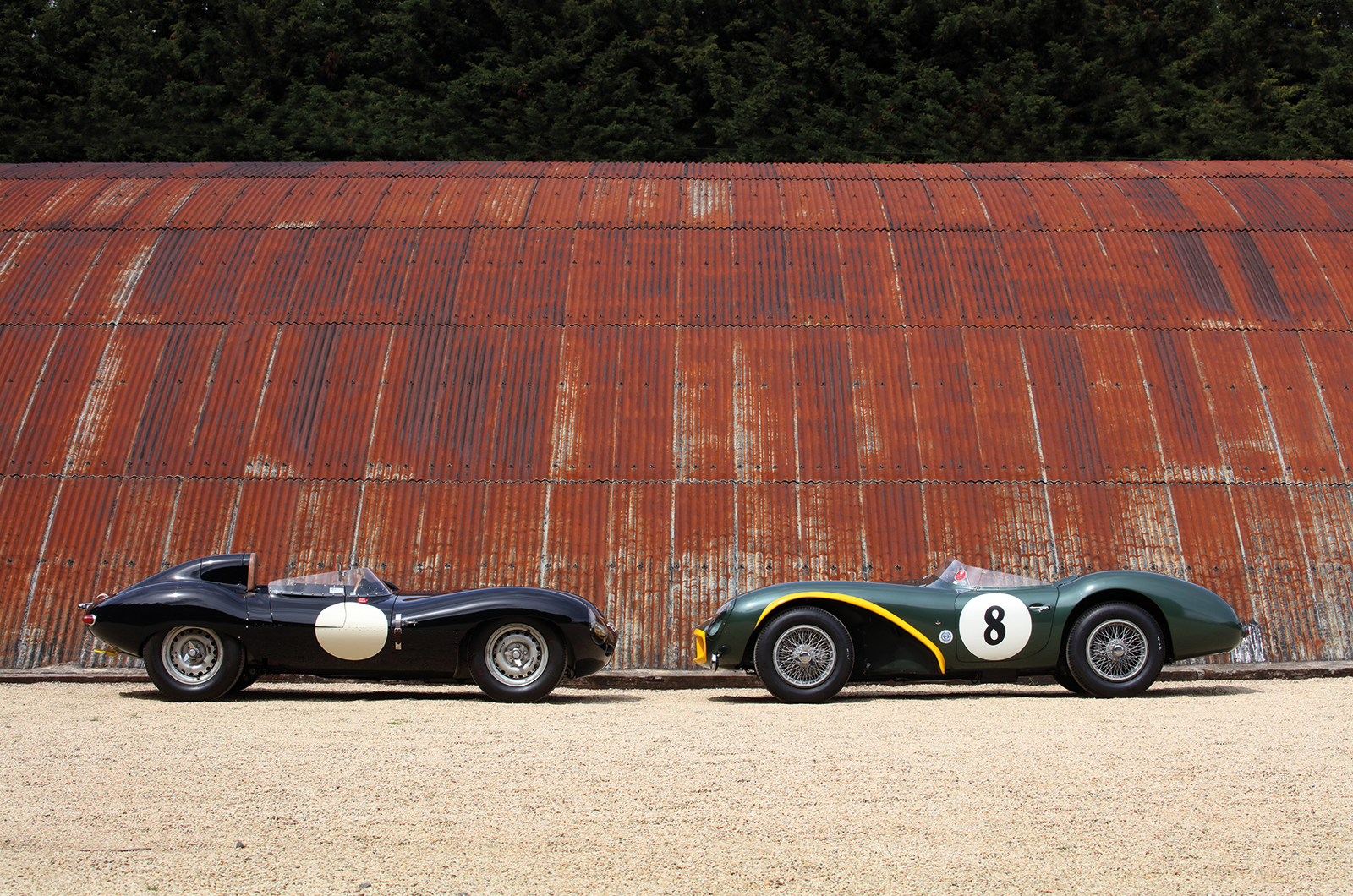On a winding road circuit, Moss maintained that the DB3S would outhandle a D-type every time: “Coming to the Aston direct from the Mercedes 300SLR, I found the DB3S so much smaller, lighter and easier to drive. For a circuit such as the Nürburgring I would have loved to combine the nimbleness of the DB3S with the sheer speed and reliability of the SLR. That would have been the perfect car.”
An evocative view
Moss’ view of the D-type is possibly coloured by frustrating unreliability, because his only finish in one came after pushing the Jaguar across the line at the ’54 Dundrod Tourist Trophy to salvage 18th with failed oil pressure.
“It was a beautiful Jaguar,” said Moss, “perhaps the most charismatic of them all. But it was very much a precision instrument tailor-made for Le Mans, and not at all a rough-road or aerodrome racer. Compared to the C-type, the D-type was certainly stiffer, quicker and more precise. It was ideal on the smooth and very fast expanses of Le Mans and Reims, but on an undulating road circuit such as Dundrod it wasn’t as responsive
or as manoeuvrable as a DB3S.”
Racing journalist Frère was another who drove both – including 62 EMU with Peter Collins to second at Le Mans in 1955.
“It rained for more than half the race,” said Frère. “Peter and I were quite good in the rain; it also suited the Aston because it was rather underpowered. I really enjoyed the DB3S, which was a very fine car, much more of a racing car than the D-type. The D-type handled virtually like a touring car, it was so easy to drive and so flexible.
“The Aston in comparison was harsher, with a noisier, less flexible engine and a more difficult gearchange. The D-type had extremely light brakes, nearly as light as the accelerator, whereas the Aston’s brakes needed quite a hard push.”
Aston works legend Tony Brooks confirmed the appeal of the DB3S: “We had some pretty hot drivers in those days and it was just as well. Although the DB3S handled and braked beautifully, we were struggling for power against the Jaguars and Ferraris. Wherever there was any kind of straight we were at a disadvantage, but this was good training because you really had to drive those Astons to be competitive.”
Brooks always rose to the challenge, and on his first visit to the Nordschleife in 1956 he was 16 secs faster than teammate Collins and finished fifth: “I liked the ’Ring, and because the DB3S handled so well it was easier to be competitive.”
Which would you choose?
The DB3S and D-type are high on my all-time list and their divergent characters make it a tough choice.
Both are rewarding on the road, the Aston’s more balanced handling matched by the Jaguar’s shattering pace.
In the race for the keys the D-type’s mould-breaking and seductive design is alluring, but the history and precious patina of 62 EMU are equally tempting.
To own the very car my hero Collins raced has special appeal, and if forced to choose I’d take the Aston – mostly because it’s a proper two-seater and there’s nothing like sharing the experience.
Riding shotgun in a D-type with the exhaust cooking the floor soon loses its appeal.
Images: James Mann
Thanks to Martin Chisholm at The Classic Motor Hub. For details of its popular Coffee & Classics gatherings, see classicmotorhub.com
FACTFILES
ASTON MARTIN DB3S
- Sold/no built 1953-’56/31 (including 20 customer cars)
- Construction steel tubular frame with aluminium body
- Engine iron-block, alloy-head, dohc, twin-plug 2992cc straight-six, triple Weber 45DCOE carburettors
- Max power 225bhp @ 6000rpm
- Max torque n/a
- Transmission David Brown four-speed manual, RWD via ZF limited-slip differential
- Suspension: front independent, by semi-trailing arms rear de Dion axle with central slide, trailing links; torsion bars, telescopic dampers f/r
- Steering worm and roller
- Brakes discs (occasionally drums)
- Weight 1962lb (890kg)
- 0-60mph 6.6 secs
- Top speed 140mph
- Price new £3684 (inc Purchase Tax)
JAGUAR D-TYPE
- Sold/no built 1954-’58/’67 (including 16 XKSS road cars)
- Construction magnesium semi-monocoque with steel multi-tubular front subframe
- Engine iron-block, alloy-head, dry-sump, dohc 3442cc straight-six, triple Weber 45DCOE carburettors
- Max power 270bhp @ 5750rpm
- Max torque 256lb ft @ 4500rpm
- Transmission all-synchromesh four-speed manual, RWD
- Suspension: front independent, by double wishbones, longitudinal torsion bars rear live axle, torsion bars, radius arms, A-bracket; telescopic dampers f/r
- Steering rack and pinion
- Brakes discs, with gearbox-driven servo
- Weight 2187lb (992kg)
- 0-60mph 4.7 secs
- Top speed 170mph (Le Mans ratio)
- Price new £3633
READ MORE
Six seize gold on silver-jubilee Le Jog
The civil English war: Aston DB6 vs Jaguar E-type
Lola Mk6: the forgotten car at the heart of Le Mans ’66
Mick Walsh
Mick Walsh is Classic & Sports Car’s International Editor
